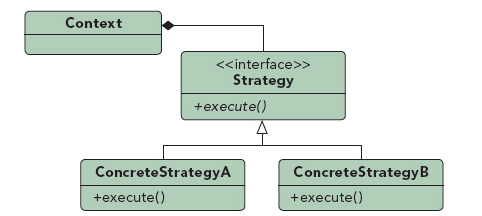一、客户消息通知
假设某司维护着一些客户资料,需要在该司有新产品上市或者举行新活动时通知客户。现通知客户的方式有两种:短信通知、邮件通知。应如何设计该系统的客户通知部分?为解决该问题,我们先构造客户类,包括客户常用的联系方式和基本信息,同时也包括要发送的内容。
class customer:
customer_name=""
snd_way=""
info=""
phone=""
email=""
def setPhone(self,phone):
self.phone=phone
def setEmail(self,mail):
self.email=mail
def getPhone(self):
return self.phone
def getEmail(self):
return self.email
def setInfo(self,info):
self.info=info
def setName(self,name):
self.customer_name=name
def setBrdWay(self,snd_way):
self.snd_way=snd_way
def sndMsg(self):
self.snd_way.send(self.info)
snd_way向客户发送信息的方式,该方式置为可设,即可根据业务来进行策略的选择。
发送方式构建如下:
class msgSender:
dst_code=""
def setCode(self,code):
self.dst_code=code
def send(self,info):
pass
class emailSender(msgSender):
def send(self,info):
print "EMAIL_ADDRESS:%s EMAIL:%s"%(self.dst_code,info)
class textSender(msgSender):
def send(self,info):
print "TEXT_CODE:%s EMAIL:%s"%(self.dst_code,info)
在业务场景中将发送方式作为策略,根据需求进行发送。
if __name__=="__main__":
customer_x=customer()
customer_x.setName("CUSTOMER_X")
customer_x.setPhone("10023456789")
customer_x.setEmail("customer_x@xmail.com")
customer_x.setInfo("Welcome to our new party!")
text_sender=textSender()
text_sender.setCode(customer_x.getPhone())
customer_x.setBrdWay(text_sender)
customer_x.sndMsg()
mail_sender=emailSender()
mail_sender.setCode(customer_x.getEmail())
customer_x.setBrdWay(mail_sender)
customer_x.sndMsg()
结果打印如下:
PHONE_NUMBER:10023456789 TEXT:Welcome to our new party!
EMAIL_ADDRESS:customer_x@xmail.com EMAIL:Welcome to our new party!
二、策略模式
策略模式定义如下:定义一组算法,将每个算法都封装起来,并使他们之间可互换。以上述例子为例,customer类扮演的角色(Context)直接依赖抽象策略的接口,在具体策略实现类中即可定义个性化的策略方式,且可以方便替换。

上一节中我们介绍了桥接模式,仔细比较一下桥接模式和策略模式,如果把策略模式的Context设计成抽象类和实现类的方式,那么策略模式和桥接模式就可以划等号了。从类图看上去,桥接模式比策略模式多了对一种角色(抽象角色)的抽象。二者结构的高度同构,也只能让我们从使用意图上去区分两种模式:桥接模式解决抽象角色和实现角色都可以扩展的问题;而策略模式解决算法切换和扩展的问题。
三、策略模式的优点和应用场景
优点:
1、各个策略可以自由切换:这也是依赖抽象类设计接口的好处之一;
2、减少代码冗余;
3、扩展性优秀,移植方便,使用灵活。
应用场景:
1、算法策略比较经常地需要被替换时,可以使用策略模式。如现在超市前台,会常遇到刷卡、某宝支付、某信支付等方式,就可以参考策略模式。
四、策略模式的缺点
1、项目比较庞大时,策略可能比较多,不便于维护;
2、策略的使用方必须知道有哪些策略,才能决定使用哪一个策略,这与迪米特法则是相违背的。
